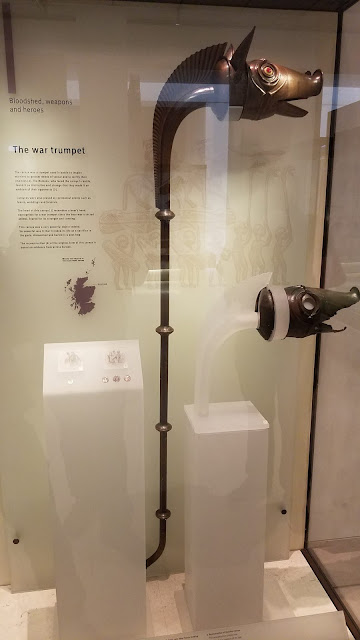 |
| Edinburgh, the capital of Scotland. You can see Arthur's Seat, an extinct volcano, rising up above the city in the center of the picture. |
 |
| Statues of Scotland's great kings and thinkers dot old town. |
 |
| The entrance to St. Giles' Cathedral, where John Knox used to preach. |
 |
| A flattering statue of the notoriously obese Hume. |
 |
| Edinburgh is a town built of stone, and its many hills makes for an interesting cityscape. |
 |
| One of Edinburgh's many pubs. The White Hart Inn is supposedly the oldest. |
 |
| Edinburgh Castle sits on one end of the royal mile, perched above the city. Holyrood Palace is at the other end. |
 |
| A view of the royal mile hill |
 |
| Arthur's Seat is right behind the Holyrood Palace |
 |
| Edinburgh lies at the mouth of the Firth of Forth, an estuary where many Scottish rivers meet. |
 |
| Edinburgh is actually Scotland's second biggest city. Glasgow has over 100,000 more inhabitants. |
 |
| Edinburgh castle has endured an estimated 26 sieges over its 1000 year history. |
 |
| A group of churches and residences reside in the center of the castle. |
 |
| Mons Meg is one of the largest cannons ever made. It was given to James II, King of Scotland, in 1454 by the Duke of Burgundy. |
 |
| A print from 1781 making fun of the quality of British Army recruits. |
 |
| The thin red line of Highlanders staving off a Russian calvary charge during the Battle of Balaclava in 1854 |
 |
| Holyrood Palace was a royal residence since the 16th century, and still serves as the official residence of the British monarch in Scotland. |
 |
| Holyrood Palace was originally an abbey that was destroyed over time due to Edinburgh's continuous religious and political conflicts. |
 |
| The Queen has a garden party at Holyrood every year. |
 |
| Dolly the Sheep resides in the National Museum of Scotland. |
 |
| Stone carvings of the ancient inhabitants of Scotland |
 |
| Some Christian symbolism can be seen on the carvings, but I don't remember any birdmen in the Bible. |
 |
| The Picts had their priorities straight. |
 |
| The carynx, a war trumped used by the tribes of Scotland that fought the Romans |
 |
| A battle between Picts and Anglo-Saxons ~685 A.D. |
 |
| A depiction of Roman soldiers |
 |
| Roman cavalry helmets found in Scotland |
 |
| Silver chain jewelry made from melted down Roman silver. |
 |
| More religious stone carvings |
 |
| The inhabitants of Scotland were illiterate until the 5th/6th centuries |
 |
| The Scots were actually Irish invaders of Pict lands during the 4th/5th centuries. |
 |
| Famous medieval chess pieces made of walrus ivory |
 |
| The Bute mazer, made after Robert the Bruce defeated the English at the Battle of Bannockburn in 1314, shows the coats of arms of the main Scottish houses. |
 |
| A ceremonial bastard sword |
 |
| The view of the royal mile from the National Museum of Scotland |
 |
| Another of Edinburgh's strange bars |
 |
| A strange, secret bar in Edinburgh's new town |
 |
| And another |
 |
| Try the top hat! |



No comments:
Post a Comment